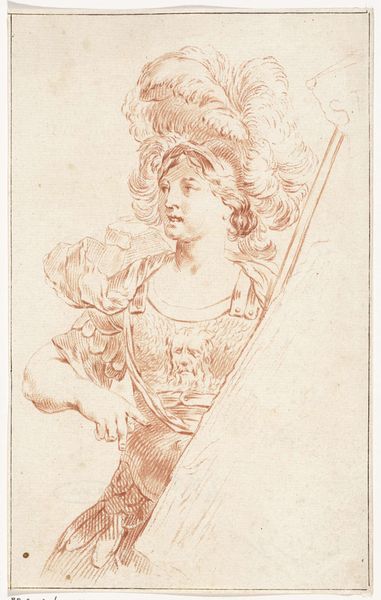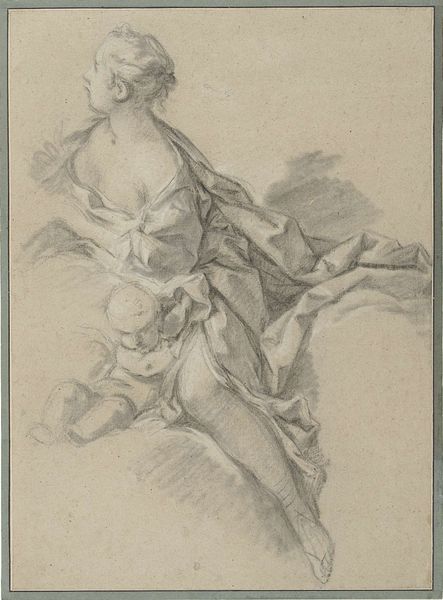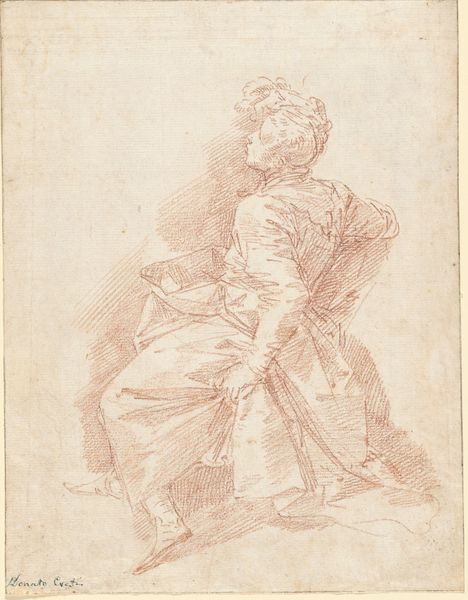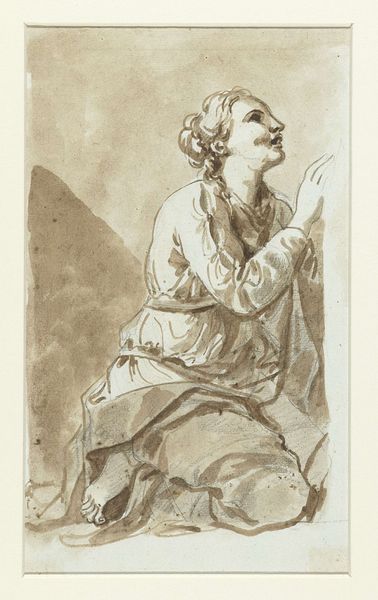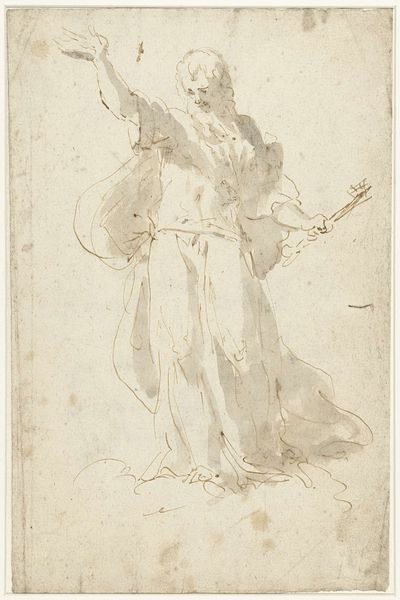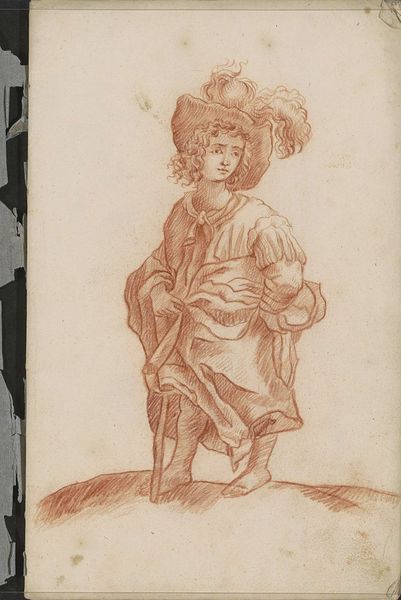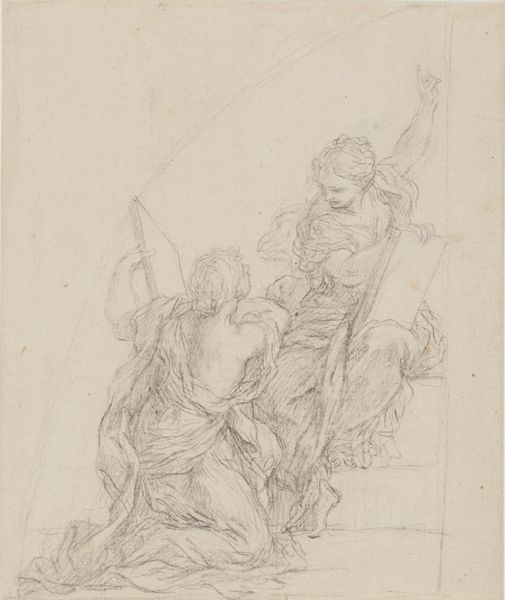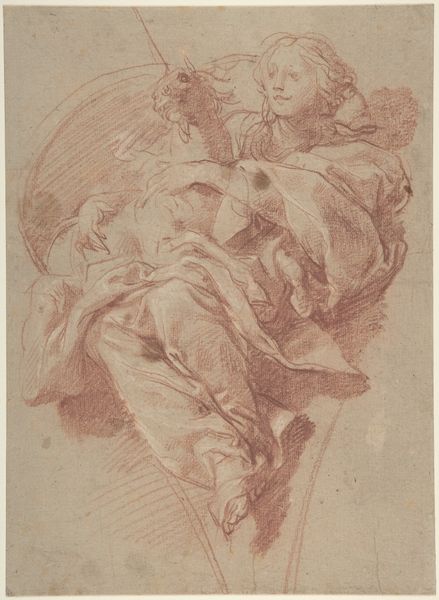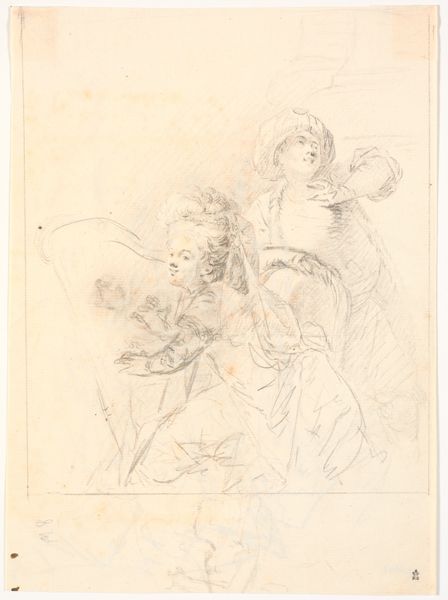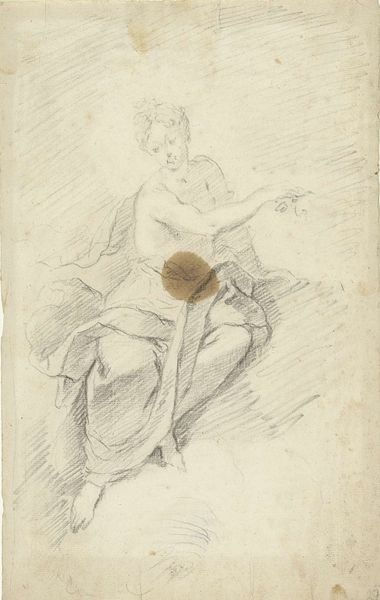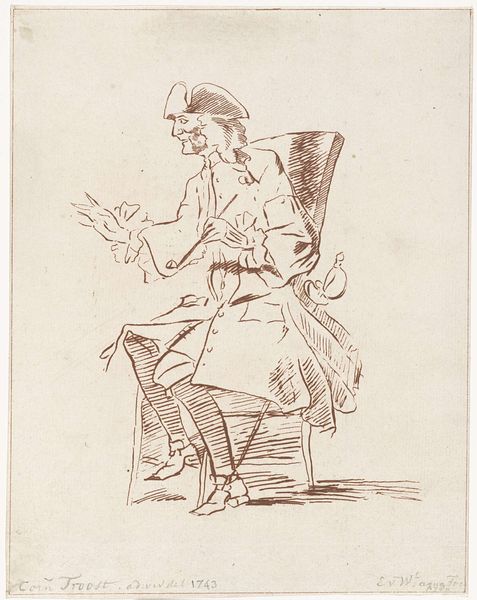
drawing, pencil, pen
#
portrait
#
drawing
#
neoclacissism
#
pencil sketch
#
classical-realism
#
figuration
#
pencil drawing
#
pencil
#
pen
#
history-painting
Dimensions: height 192 mm, width 157 mm
Copyright: Rijks Museum: Open Domain
Curator: Here we have Izaak Jansz. de Wit’s drawing, "Minerva," created sometime between 1754 and 1809. The artwork, rendered in pencil and pen, presents a compelling vision of the Roman goddess. Editor: My first impression is one of poised strength. The red chalk, almost like dried blood, hints at both violence and resilience. It's not just a pretty face; there's power in her gaze. Curator: Absolutely. Consider the context: the late 18th century was a time of revolution and shifting political landscapes. Neo-classicism was more than just an aesthetic; it was a statement. Artists used classical imagery to evoke virtues like civic duty, reason, and order, offering a visual counterpoint to what many perceived as societal decay. Editor: Indeed, she's more than just a classical figure; she’s a symbol loaded with intent. Note the “SPQR” banner behind her—Senatus Populus Que Romanus. The Senate and the People of Rome. It connects her directly to the ideas of Roman republicanism, a potent symbol throughout the Enlightenment. Even her feathered helmet seems to be referencing ancient greek aesthetics in the midst of Rome's dominance. Curator: Exactly! And Minerva, as the goddess of wisdom and strategic warfare, became a particularly useful figure. Think about it – she embodies both the intellectual and military strength that revolutionaries admired and believed necessary for societal change. This drawing then participates in that revolutionary visualization. Editor: And don't overlook her attributes – the shield, the Gorgon on her breastplate. These aren't mere decorations; they speak to the protective and, yes, even fearsome aspects of wisdom. Minerva, or Athena, could be a terrifying figure to her enemies. The artist presents an intimidating portrait of the iconic Goddess. Curator: A fittingly complex figure for complex times. This work underscores how artists actively used historical and mythological figures to comment on their contemporary world. It's a fascinating blend of the antique and the modern. Editor: For me, it underscores how enduring those archetypes are. Minerva continues to represent intellectual power today. Even the very name SPQR has echoed in revolutionary and liberation movements. I can't help but see a little of our present day mirrored back at us.
Comments
No comments
Be the first to comment and join the conversation on the ultimate creative platform.

